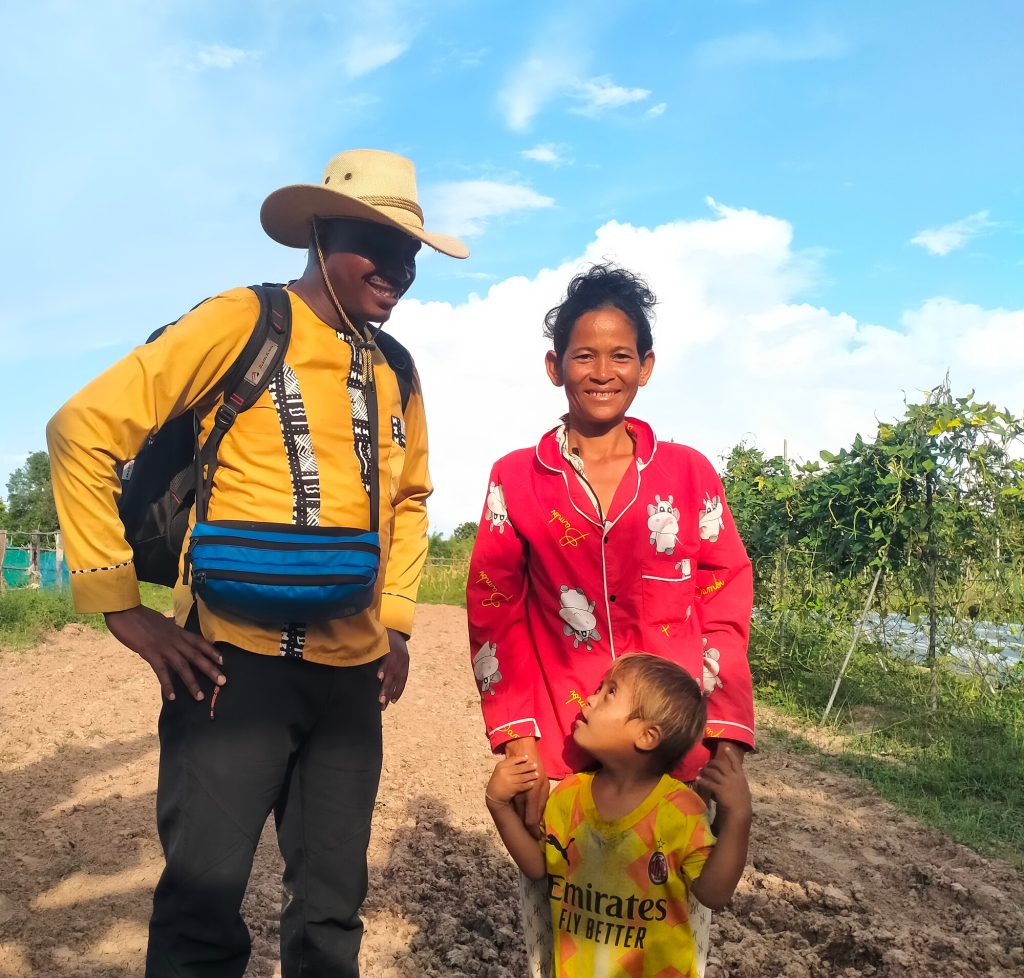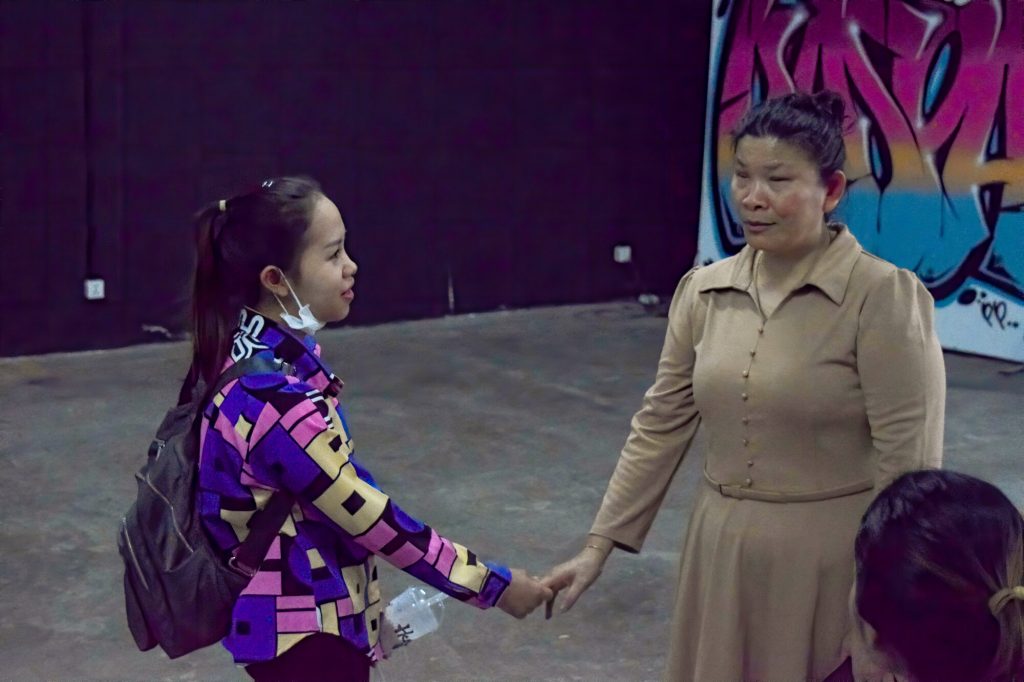I was asked to write an article on Disability, safeguarding, and inclusion in Cambodia for the Fall 2023 edition of Mennonite Central Committee’s Intersections: MCC theory and practice quarterly newsletter. I’m sharing the text of the article below. As many of you know, I worked with adults with intellectual disabilities and autism for eight years before returning to MCC in 2019.
Cry of the Gecko: History of the Christian Mission in Cambodia contains the 2004 account of Min Sor, a Cambodian working for World Vision, who learned that a newborn girl in a nearby village had recently been crushed to death because she was born with a cleft palate. The local soothsayer told her family that her birth defect was a sign of spiritual disfavor and that the baby needed to be killed to avoid future disaster. Min Sor kept in touch with the family and when their next baby was born, a boy who also had a cleft palate, he intervened before the infant was crushed and took him to live with the Sisters of Mercy. After Maryknoll paid for surgery to repair the baby’s cleft palate, the boy was happily taken back by his birth family.
In Cambodia, people with disabilities are often believed to have been immoral in a previous life due to how Buddhist beliefs about karma are interpreted locally. Disability, and misfortune in general, are believed to have been caused by accumulating negative karma in a past life. People with disabilities—particularly birth defects—are kept home and out of sight due to familial shame. Cambodia is a collectivist culture, with family members expected to contribute to the family economy. This family structure is stressed when family members do not contribute sufficiently to the family unit—this dynamic sometimes results in people with disabilities being shamed, excluded or disowned.

In this traditional belief system, overt birth defects are considered signs of spiritual disfavor. Women are believed to be closer to the celestial world than men and thus are more susceptible to evil spirits, especially during childbirth. As healthcare has improved, more Cambodians are turning away from soothsayers and towards medical science, but mothers are still seen as responsible both for children having a disability and for being their caregiver. During an MCC project visit in 2023, several community members told us how a local mother was to blame for her child, who had obvious signs of Down Syndrome, for “not being normal” because she “did not take him to the hospital soon enough.”

Across the world, people with disabilities are especially vulnerable to exploitation and abuse. Several international studies have shown that women with disabilities are sexually assaulted at rates at least double that of the general population. Women with cognitive or communication disabilities, due to their lack of comprehension of the situation or their inability to say no, are wrongly claimed to be consenting. General safeguarding strategies often fail to protect people with disabilities because of cultural beliefs (“they are unclean”), social stigmas (“they are crazy, don’t believe them” or “getting involved would hurt my reputation”), fear (“if I report, who will care for them”). These cultural factors are compounded by the fact that most reporting mechanisms require a high degree of cognitive and communicative ability.
“No system of safeguarding and inclusion can work without people going into communities, listening, following up and intervening.”
MCC Cambodia is working on ensuring the safeguarding and inclusion of people with disabilities in our projects using the following approaches:
- We ensure that persons with disabilities are added to our participant tracking tables for all new projects. If we want to include and safeguard vulnerable populations, we first need to know that they are participating in our projects.
- We asked our partners to begin including and categorizing disabilities in their baseline surveys, so that MCC and our partners can better understand the diversity of needs.
- We have made it a point to visit participants with disabilities and to follow-up based on what we have heard. Recall the account of Min Sor who saved the baby. When he heard about the family’s situation, he visited the family and made a point to follow up regularly. No system of safeguarding and inclusion can work without people going into communities, listening, following up and intervening.
- The other takeaway from Min Sor’s account is that he saw a baby, a person created in God’s image, not reducing the baby to its disability or viewing the baby as a sign of spiritual disfavor. Shifting the narrative from negative to positive, from a focus on disability as a negative sign to a focus on our common humanity, is essential for disability inclusion and safeguarding. This work should start on our own MCC teams before engaging partners and community members. We all harbor prejudices and we cannot effectively respond if we are only seeing disability.
- In 2022, Women Peace Makers, a Cambodian organization and MCC partner, invited MCC Cambodia office staff to join an immersive sensory art display they had organized called Close Your Eyes and See, in which we were blindfolded and then led through a dark room that simulated the uneven pavement, sights, smells and sounds of daily life in Phnom Penh. It was a powerful experience that made several MCC staff weep and helped us understand what it really means to be blind in Cambodia.
- Trainings and policies set standards and expectations. However, these do not necessarily result in narrative change. Human-to-human exposure is the most effective way to break down negative stereotypes. Many local non-governmental organizations (NGOs) and civil society organizations that work with people with disabilities have community ambassadors who will share their experiences. Visiting people with disabilities in the communities where we work begins to change the narrative as their humanity and ability are witnessed.
- People with disabilities are especially vulnerable to sexual exploitation and abuse.
- When working with people who cannot report sexual exploitation and abuse for themselves, connect with and broaden their network of reporters.
- The obvious way to do this is to require it—check the box by adding it to a policy or to someone’s job description. But MCC and partner staff are not going to be there 24/7. A community of care must be built up around the person. This can happen organically just by consistently following up on the person with a disability. If a partner knows that you care and are going to ask, they will start checking in too. The same is true for community leaders, neighbors and other NGO workers who visit the community. Ask how the person with a disability is doing and listen to the answer.
- Identify and connect with natural supports—those who are already actively caring for the person with disabilities—and make sure that they also have access to the reporting mechanism. It is important to go beyond the primary caregiver. In 2023, we visited an elderly man who was caring for his wife with dementia and ambulation difficulties. We listened to his concerns about falling while helping her, learned that their children are not supportive and identified neighbors who are engaged with him.
- There is a place for surveys designed around visual cues, but these can be challenging to interpret if the surveyor does not know the person or culture well.
- Watch for physical or emotional signs of abuse. Train staff and partners to do so as well.
- When working with people who cannot report sexual exploitation and abuse for themselves, connect with and broaden their network of reporters.
In the Gospel of John, Jesus’ disciples ask, “Rabbi, who sinned, this man or his parents, that he was born blind?” Jesus answers neither—the disability was not the result of immorality. Two thousand years later, Christians still struggle to listen to Jesus, too often attributing disabilities to sin. Policies, reporting mechanisms, and pointing to Scripture can only take us so far. To ensure safeguarding for people with disabilities, we must embrace human-to-human interactions with them. We must see the baby ourselves—including but not limited to the baby’s disability—before we can help others to see the baby.
Charles Conklin is MCC representative for Cambodia, based in Phnom Penh.
Maher, Brian and Uon Seila. “Left to Die in a Rice Field, Min Sor (2004),” 163-164. Cry of the Gecko: History of the Christian Mission in Cambodia. Centralia, WA: Gorham Printing, 2012.
Jacobsen, Trudy. “‘Traditional’ Cambodia.” Lost Goddesses: The Denial of Female Power in Cambodian History. Copenhagen, Denmark: NIAS Press, 2008.
The Roeher Institute. “Violence against Women with Disabilities.” Ottawa: Public Health Agency of Canada, 2004.
Benedet, Janine and Isabel Grant. “Hearing the Sexual Assault Complaints of Women with Mental Disabilities: Consent, Capacity, and Mistaken Belief.” McGill Law Journal 52 (2007): 243-287.
Resource and Support Hub. “Pocket Guide: Safeguarding Persons with Disabilities and/or Mental Health Conditions in CSO programmes.” 2022. Available at https://safeguardingsupporthub.org/documents/pocket-guide-safeguarding-persons-disabilities-andor-mental-health-conditions-cso-0.
2 Comments Add yours